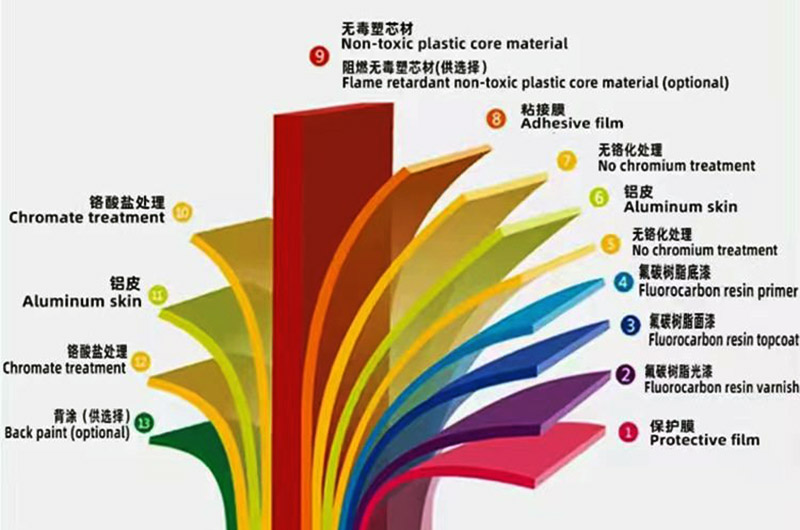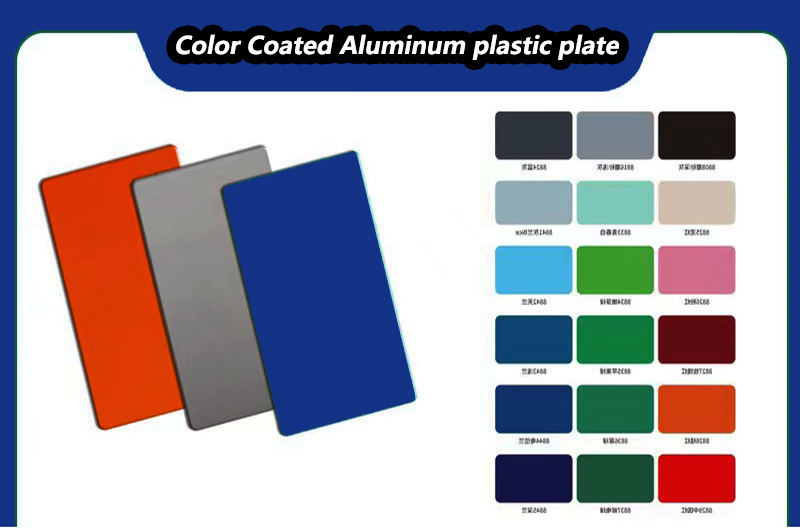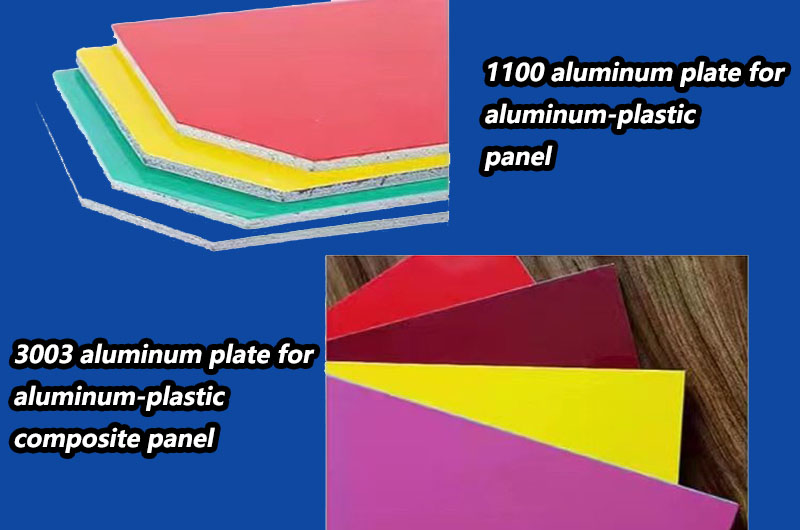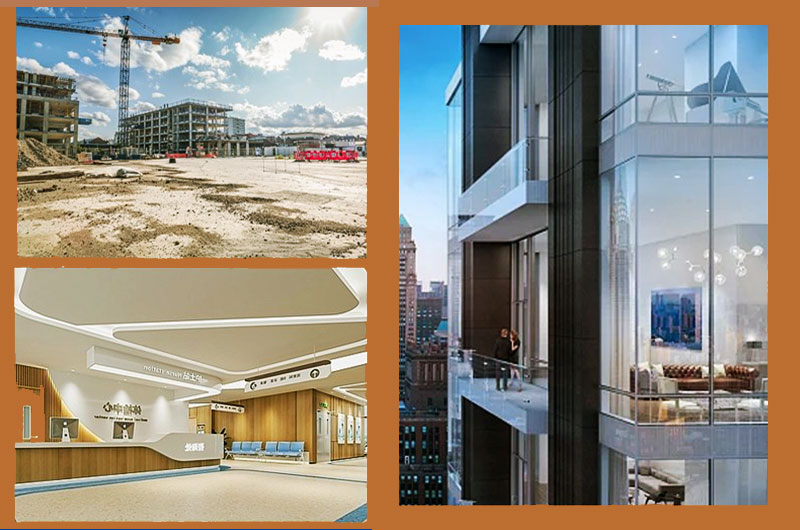- Aluminum plastic plate material composition
- Aluminum plastic plate specifications
- Aluminum plastic plate features
- Advantages of Aluminum plastic plate
- Aluminum plastic plate Type
- Aluminum plastic plate application areas
- Aluminum plastic plate installation and maintenance
- Environmental protection and sustainability
Aluminum-plastic panel is a composite material widely used in construction and decoration fields. It combines the solidity and lightness of aluminum panels with the durability and versatility of plastic. Aluminum-plastic panels have important applications in building exterior walls, interior decoration, billboards, transportation vehicles, and many other fields.
Aluminum-plastic panels, also called aluminum-plastic composite panels, are composed of multiple layers of materials. Aluminum-plastic panels are a new type of building decoration material. Due to their excellent processability, better fire resistance, economy, easy construction, and rapid Be widely used.
Aluminum plastic plate material composition
Aluminum-plastic panels are mainly composed of two parts, namely the surface aluminum layer and the internal plastic layer.
- The aluminum layer is usually made of high-quality aluminum alloy, which has superior corrosion resistance and weathering resistance.
- The plastic layer often uses polyethylene (PE) or polypropylene (PP), both of which have good strength and weather resistance.

- The surface layer is chemically treated aluminum alloy (1/3/5 series alloy), the core material is polyethylene plastic, and a protective film is attached to the front.
- Common alloys used in aluminum plate materials include 1100 aluminum plate, 3003 aluminum plate, 5005 aluminum plate, 3003 aluminum plate, etc.
Aluminum plastic plate specifications
- Specifications: 1.22mx2.44m
- Thickness: 3-5mm
- Alloy: 1100, 3003, 5005, 3004
- Temper: H16, H18
- Exterior aluminum-plastic panels are made of aluminum, with four types of aluminum: 0.20 mm, 0.30 and 0.40 mm, and 0.50 mm. Among them, 0.30 and 0.40 are the most common, so the wind pressure resistance is better.
- Aluminum foil rolls are used for interior facade aluminum-plastic panels. Aluminum foil roll thicknesses of structures such as 0.15mm and 0.12-0.10mm are widely used.

Aluminum plastic plate features
- Portability: Aluminum-plastic panels are lighter and easier to carry and install than pure aluminum panels.
- Weather resistance: The surface of the aluminum-plastic panel has been specially treated to have excellent weather resistance and can resist ultraviolet rays, rain and weathering.
- Decoration: Provides a variety of surface treatment options, such as coating, spraying, anodizing, etc., to adapt to various decorative needs.
- Plasticity: Various shapes and bends can be customized according to design requirements, increasing the creativity of the design.
- Thermal and sound insulation: The structure of aluminum-plastic panels can provide certain thermal and sound insulation effects and improve the comfort of the building.

Advantages of Aluminum plastic plate
Aluminum plastic plate has excellent ductility, formability, weldability and corrosion resistance. The corrosion resistance can be further improved after anodizing.
- The main characteristics of aluminum-plastic panels are high requirements for weather resistance and UV resistance, high toughness, strong acid resistance and impact resistance, and easy surface cleaning.
- Compared with aluminum (or other metals) with the same rigidity or the same thickness, the mass of aluminum-plastic panels is small. Compared with glass and stone, the mass is much smaller.
- 5005 aluminum alloy plate is often used in aluminum-plastic plate processing. It has excellent performance, good texture, good corrosion resistance, good weldability and processing performance, and the anodized film is brighter.
Aluminum plastic plate Type
1100 aluminum plate for aluminum-plastic composite panel
1100 h18 aluminum plate is a commonly used material for aluminum-plastic composite panels. It has high corrosion resistance, electrical and thermal conductivity, good forming and processing properties, excellent ductility, low density, and good plasticity.
- Features: 1100 aluminum alloy is pure aluminum with good processability and corrosion resistance, but relatively low strength.
- Applicable fields: Suitable for some occasions that do not require high strength but require good corrosion resistance, such as interior decoration, food packaging, etc.
3003 aluminum plate for aluminum-plastic composite panel
- Features: It has high strength, good corrosion resistance, moderate processability, and is a versatile aluminum alloy.
- Applicable fields: Commonly used in building exterior walls, interior decoration, billboards and other occasions that require a certain degree of strength and corrosion resistance.

5005 aluminum plate for aluminum-plastic composite panel
- Features: It has high strength and good corrosion resistance, and is suitable for outdoor environments.
- Applicable fields: Suitable for outdoor building exterior walls, billboards and other occasions with high corrosion resistance requirements.
3004 aluminum plate for aluminum-plastic composite panel
The aluminum-plastic plate uses 3004 aluminum coil, which has higher strength than 3003 alloy, excellent formability, good corrosion resistance and high plasticity. It is used for parts that require higher strength than 3003 alloy.
- Features: It has good formability and strength, and has higher strength than 3003 aluminum.
- Applicable fields: Commonly used in applications requiring higher strength and molding performance, such as aerospace, automotive parts, etc.
Comprehensive differences
- If both strength and corrosion resistance are required, 3003 aluminum plate is a balanced choice.
- If it is in an outdoor environment and there are higher requirements for corrosion resistance, 5005 aluminum plates may be more suitable.
- 1100 aluminum plate is relatively pure and suitable for occasions that do not require high strength, but good corrosion resistance is required.
The aluminum-plastic panel cleverly utilizes the mechanical principles of the I-beam structure and cleverly gives it unique mechanical properties. In addition, the aluminum-plastic panel is composited under high temperature conditions, and the two layers of aluminum plates are at a certain temperature during the entire processing process. Under tension, when the molding is cooled, due to the difference in shrinkage between the vertically symmetrical aluminum plate and the core material, the plate has stable internal stress and has good rigidity.
Compared with single-layer aluminum plates, it has a larger elastic limit and is less prone to deformation. It can maintain good flatness for a long time in its natural state without much external force.
Aluminum plastic plate application areas
- Building exterior walls: Aluminum-plastic panels are widely used in exterior wall decoration of high-rise buildings to provide a beautiful and durable appearance.
- Interior decoration: As interior decoration materials, aluminum-plastic panels can be used for ceilings, wall decorations, etc. to create a modern and fashionable indoor environment.
- Billboards: Due to their lightness and malleability, aluminum-plastic panels are ideal for billboards and signs.
- Transportation: In ship and automobile manufacturing, aluminum-plastic panels are often used as shell materials to improve the overall lightweight of the vehicle.

Aluminum plastic plate installation and maintenance
The installation of aluminum-plastic panels is relatively simple and can be fixed on the building structure through hooks, screws, etc. In terms of maintenance, you usually only need to clean the surface regularly and be careful to avoid scratches from sharp objects during use to maintain its appearance and performance.
Environmental protection and sustainability
The manufacturing process of aluminum-plastic panels is relatively environmentally friendly, and the material itself is recyclable. Its lightweight design helps reduce the burden on the building structure and is in line with the concept of sustainable construction.
As a multifunctional building decoration material, aluminum-plastic panels not only meet the requirements of architectural design, but also have advantages in environmental protection and sustainability, so they are widely used in modern architecture and decoration.
